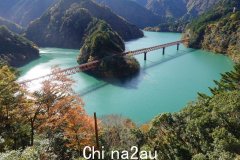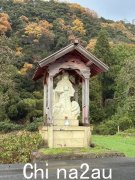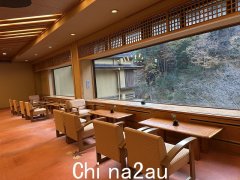From: www.environment.gov.au/heritage/publications/kurnell.html
When Lieutenant (later Captain) James Cook first set foot on Australian soil at Kurnell Peninsula Headland in Botany Bay, New South Wales, he made history.
This moment was the beginning of British settlement of the Australian continent, it altered forever the way of life for Indigenous Australians, dramatically expanded the world's scientific understanding of the continent's unique flora and fauna and ultimately led to the creation of a new nation - Australia.
Cook spent several months circling and surveying New Zealand's North and South Islands, before HM Bark Endeavour set sail for Van Diemen's Land, which he believed to be the south-eastern tip of New Holland. Southerly gales propelled the ship north and, on 19 April 1770, Lieutenant Zachary Hicks, Cook's second in command, sighted land. This was the 'East Coast of New Holland', first named Point Hicks and now Cape Everard.
The landing
The Endeavour sailed north, close to land in the Illawarra region (near Wollongong), but the surf was too rough for them to get ashore.
Sailing northwards along the coast, Cook found the first safe harbour to drop anchor on 29 April 1770 (ship's time, as opposed to GMT, where it was 28 April 1770). In addition to observing the land, Cook was searching for fresh water to sustain the crew on their voyage.
Approaching the shore by longboat, the crew noted, on what is now known as Kurnell Peninsula, the presence of a 'small village consisting of about six or eight houses'. With no means of understanding each other's language, confusion marked the initial contact between the landing party and the local people.
'I thought that they beckoned us to come ashore, but in this we were mistaken, for as soon as we put the boat in they again came to oppose us...I fired a musket between the two which had no effect...one of them took up a stone and threw at us...'
(Cook's journal, 29 April 1770)
Cook's party landed and over the next eight days explored the area, gathering food, collecting scientific samples and observing this new land. Despite several encounters, Cook was not able to establish effective communication with the local people, who maintained a wary distance. The crew noted local activities such as camping, fishing, using trees for bark and food, collecting shells and cooking fish.
The Europeans were not the only ones recording first impressions. 'Captain Cook stories' exist in parts of Aboriginal Australia the explorer never visited, such as Victoria River Downs and Central Australia. The stories recognise first contact with Cook as the start of Australia's colonisation. In some Aboriginal stories, Kurnell Peninsula is called 'The Foot', the place where Cook's foot first connected with Australian land.
Kurnell Peninsula today
Today, Kurnell Peninsula is known more for its industry and as a suburb of Australia's largest and most populous city rather than its significant place in Australia's history.
The landscape has changed almost completely from the time when naturalists and Cook's expedition members, Sir Joseph Banks and Dr Daniel Solander first walked amongst the foreign vegetation. Although many of the species they studied still survive in the area.
There are few reminders that this place and the events that transpired were the beginning of a nation.
At the site in Botany Bay there are eight monuments with a total of eleven plaques commemorating the events of Cook's landing
[ 本帖最后由 jasonnewman 于 2007-11-7 20:24 编辑 ]
评论
评论
评论
评论
评论
评论
评论
评论
评论
评论
评论
评论
评论
评论
评论
评论
评论
评论
[ 本帖最后由 jasonnewman 于 2007-11-7 21:36 编辑 ]
评论
评论
评论
评论
评论
评论
评论
澳洲中文论坛热点
- 悉尼部份城铁将封闭一年,华人区受影响!只能乘巴士(组图)
- 据《逐日电讯报》报导,从明年年中开始,因为从Bankstown和Sydenham的城铁将因Metro South West革新名目而
- 联邦政客们具有多少房产?
- 据本月早些时分报导,绿党副首领、参议员Mehreen Faruqi已获准在Port Macquarie联系其房产并建造三栋投资联




